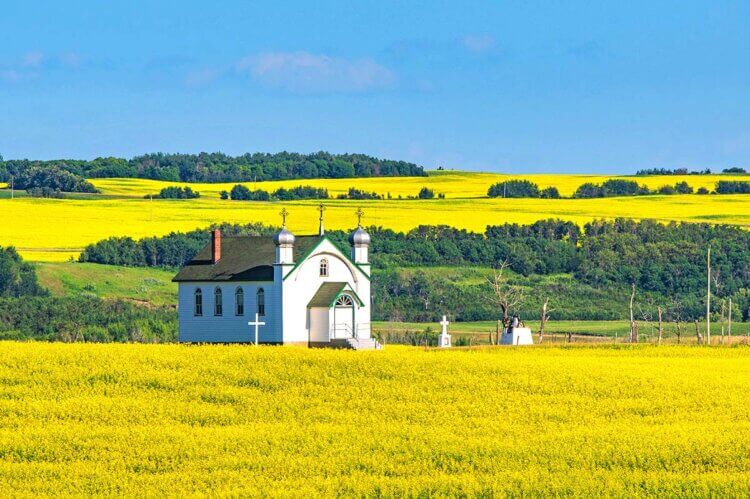
All photos © Robin and Arlene Karpan
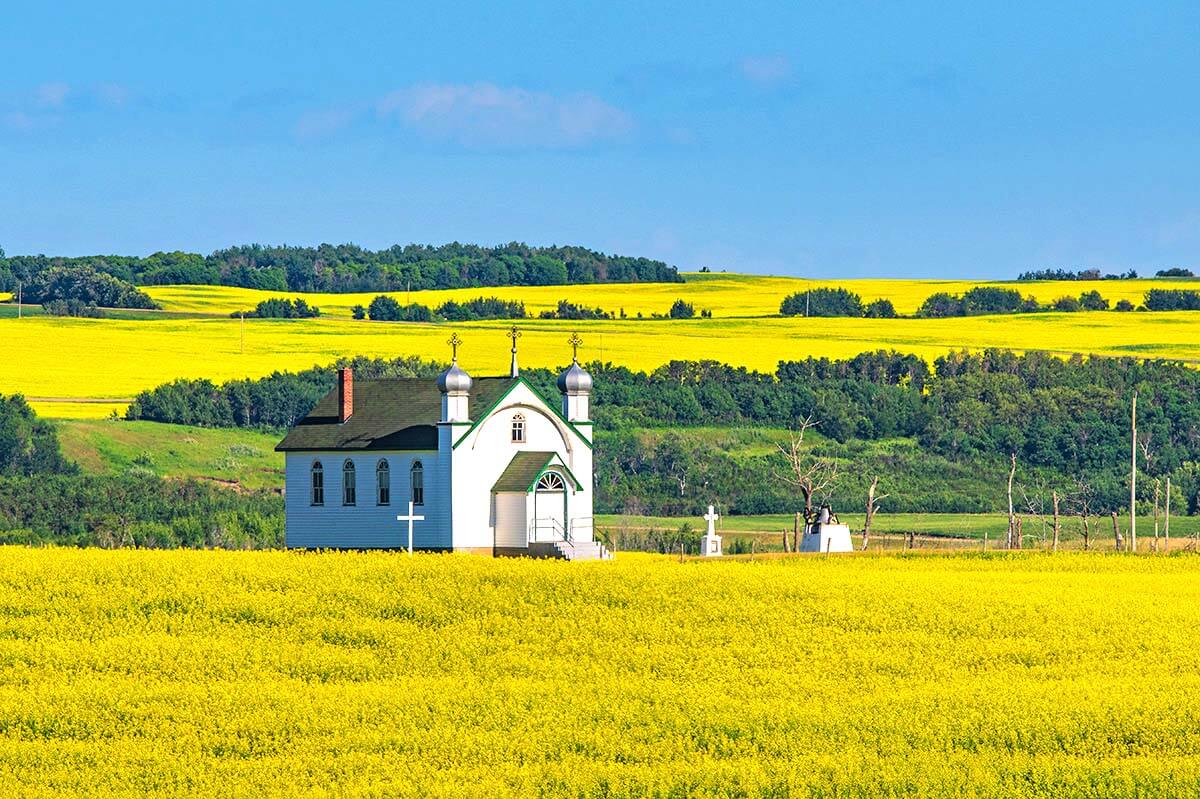
We’re right in the middle of the canola bloom now, with this all-important prairie crop blanketing many fields across Saskatchewan, Manitoba, and Alberta. So if you like to photograph big, bold, in- your-face primary colours, now is the time to get out with your camera.
Fields of canola can bring a landscape to life. The golden-blossomed oilseed crop is grown in many parts of the world, but is especially prevalent on the Canadian prairies. Here in Saskatchewan, we have the world’s largest production, so finding canola is usually as easy as driving down almost any road.
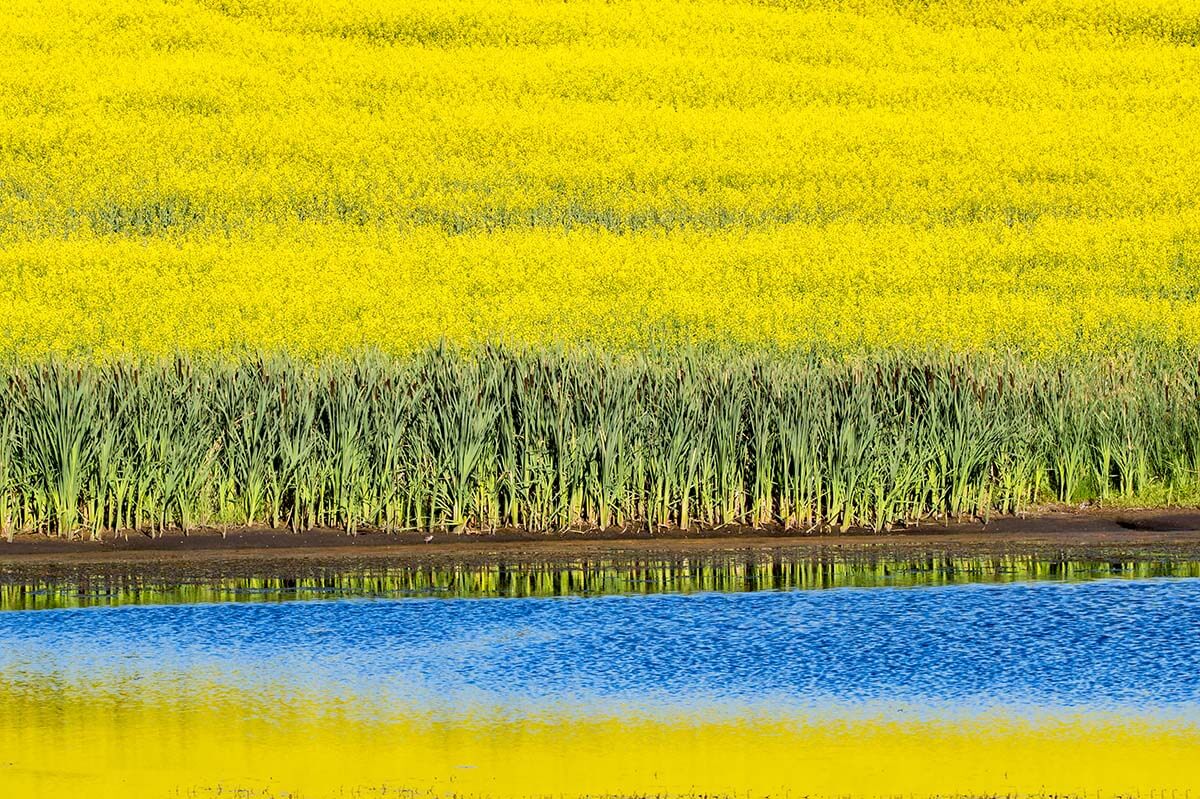
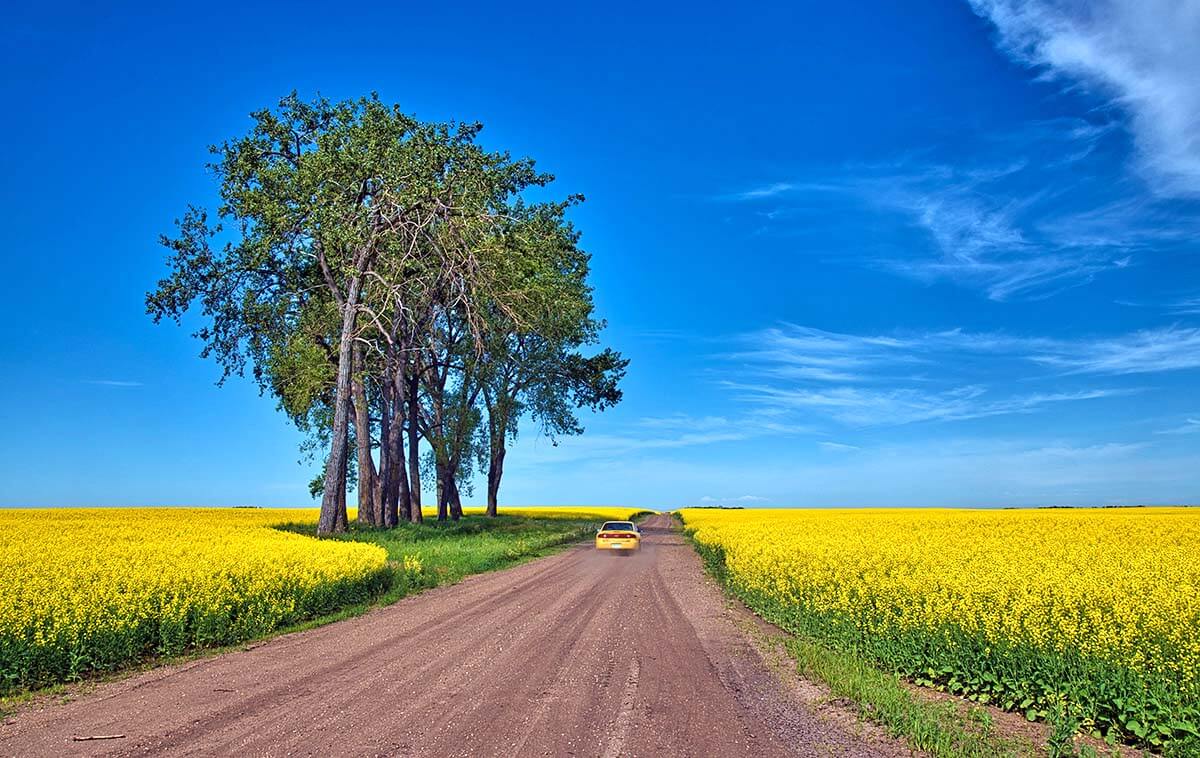
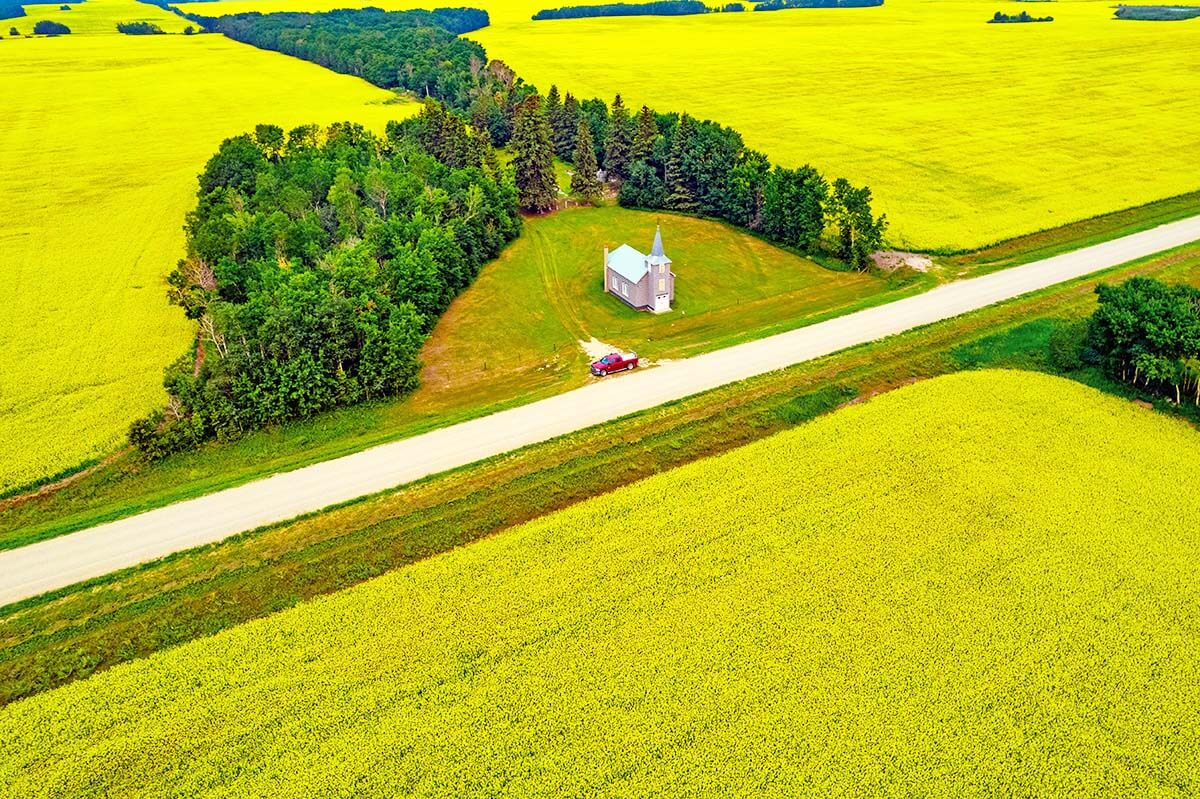
Finding Canola Fields is Usually Easy
Canola is a cool season crop, so it tends to be more common in the northern grain belt than in the far south. Around Saskatoon, where we live, we see it everywhere. Prime time to find canola in bloom is around mid-July, though conditions may vary from year to year, with some blooming in late June and early July and some late-seeded crops reaching peak blooming even into early August. This summer, the bloom started quite early in places, but we still have a lot of late-planted crops that haven’t started to flower yet.
There is no “best” area to photograph canola. Areas that we especially like for photography include the Thickwood Hills (northeast of The Battlefords, northwest of Blaine Lake) or the hills east of Redberry Lake. These areas have a lot of variety in landforms, so we get splashes of yellow from canola mixed with bushlands, small lakes, wetlands, and old farmsteads. But drive almost anywhere in Saskatchewan and you’re bound to find plenty of options.
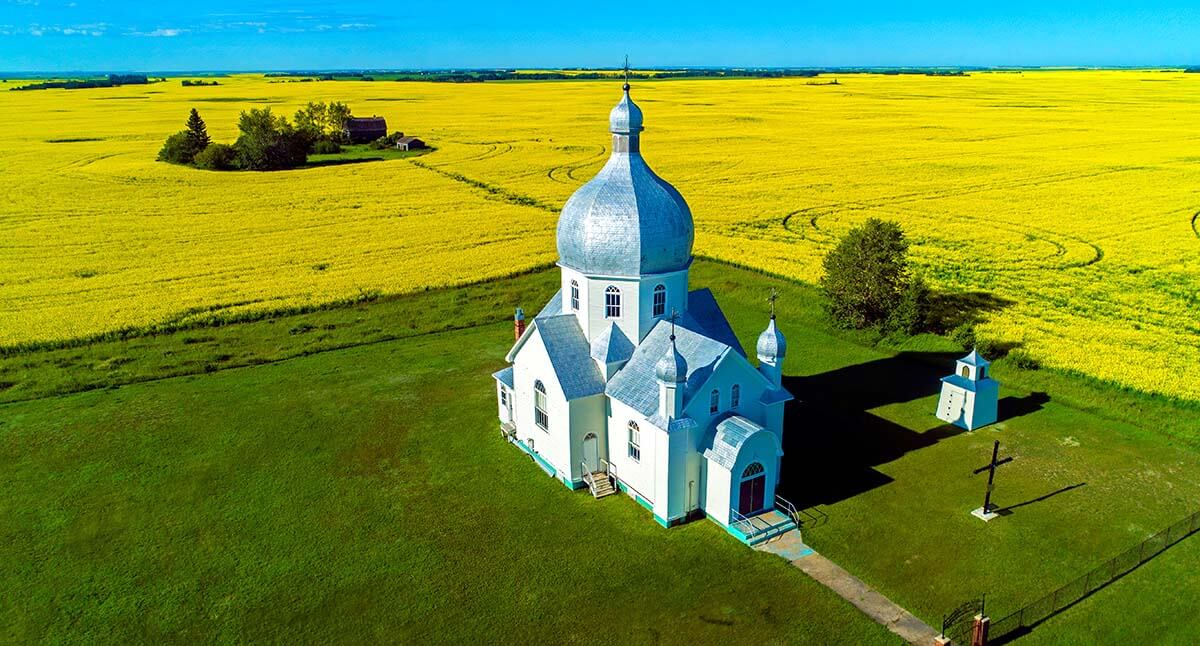
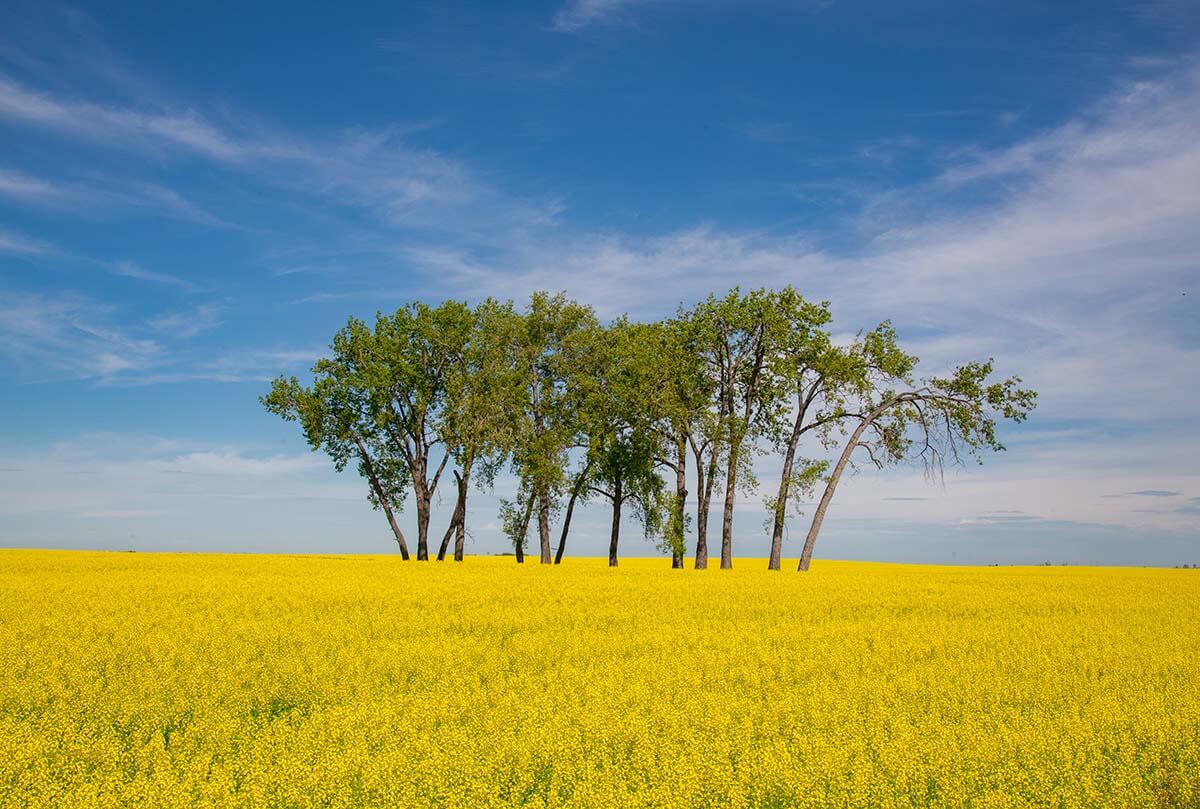
Use Buildings as a Backdrop
Canola fields can make a colourful backdrop for photographing buildings such as grain elevators (especially the traditional old wooden ones that are fast disappearing), abandoned buildings, or country churches. Another area we like is northeast of Saskatoon, around Wakaw, Smuts, and Alvena, where we sometimes find canola fields next to onion-domed Ukrainian churches.
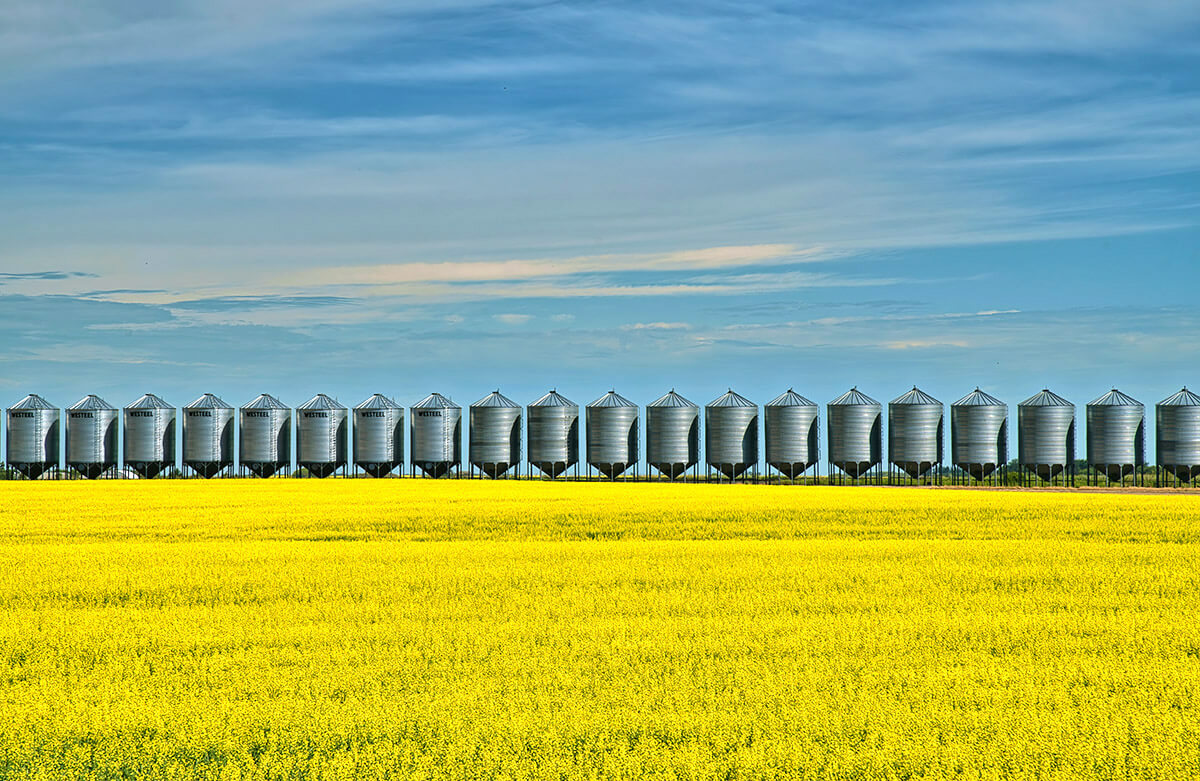
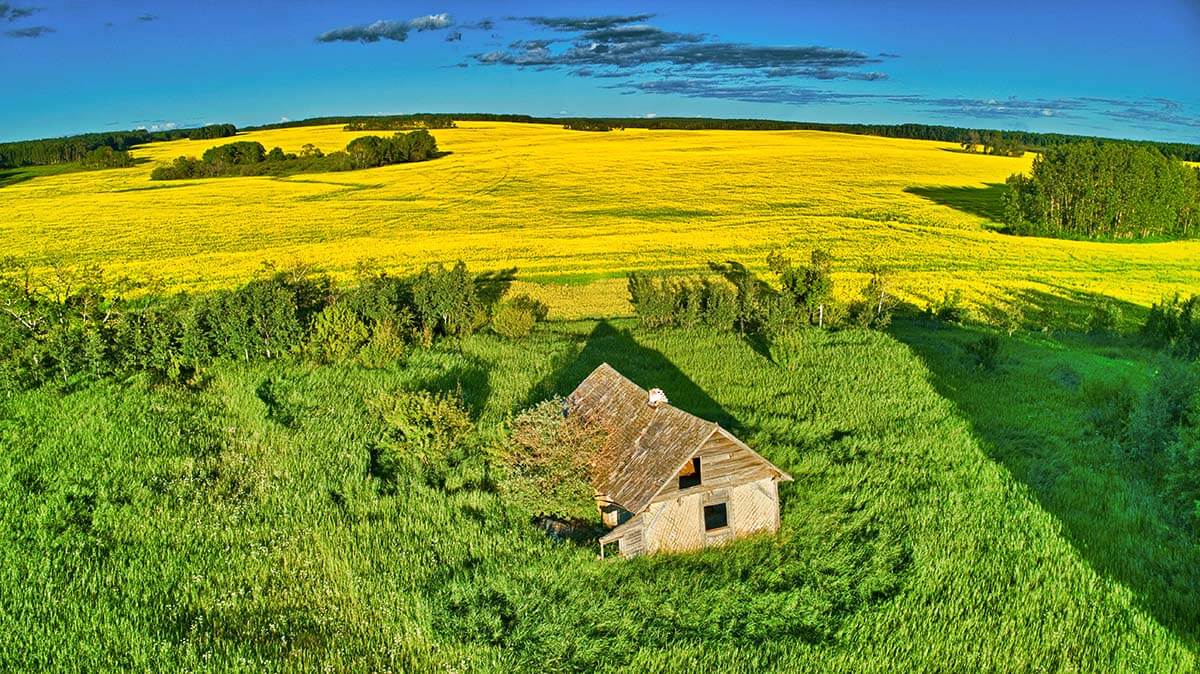
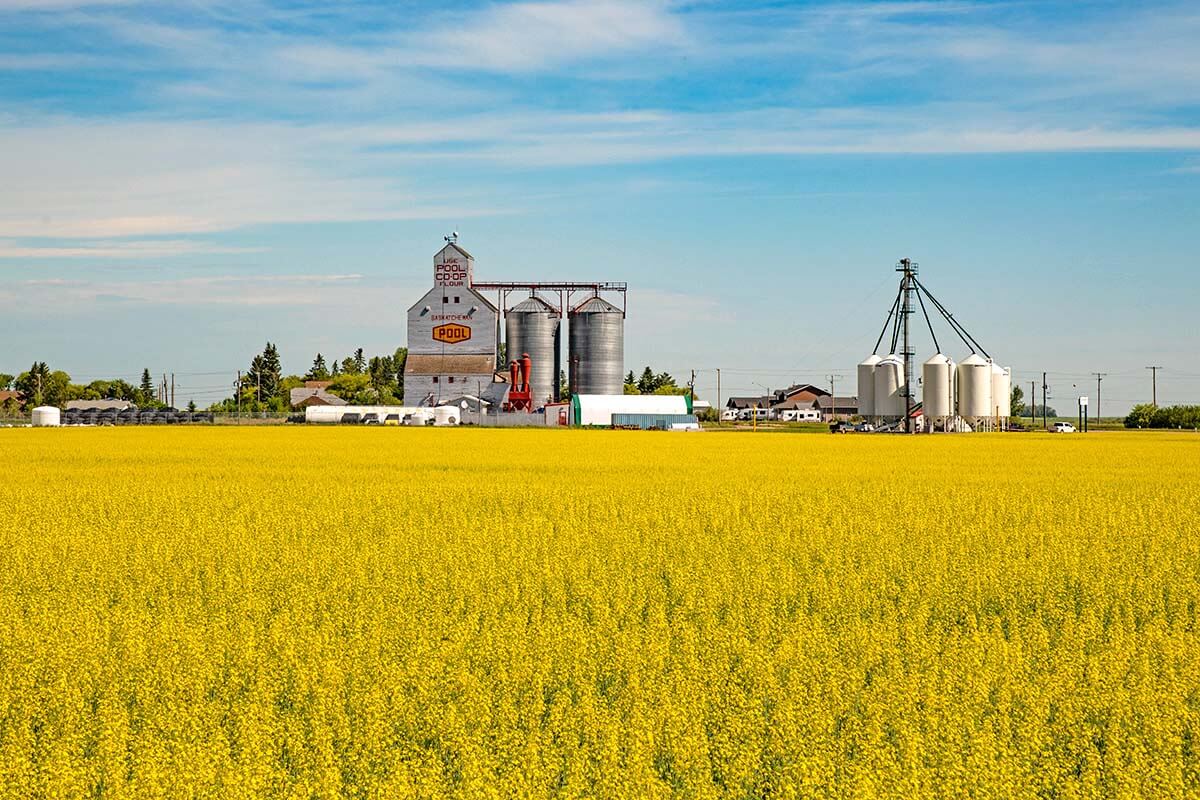
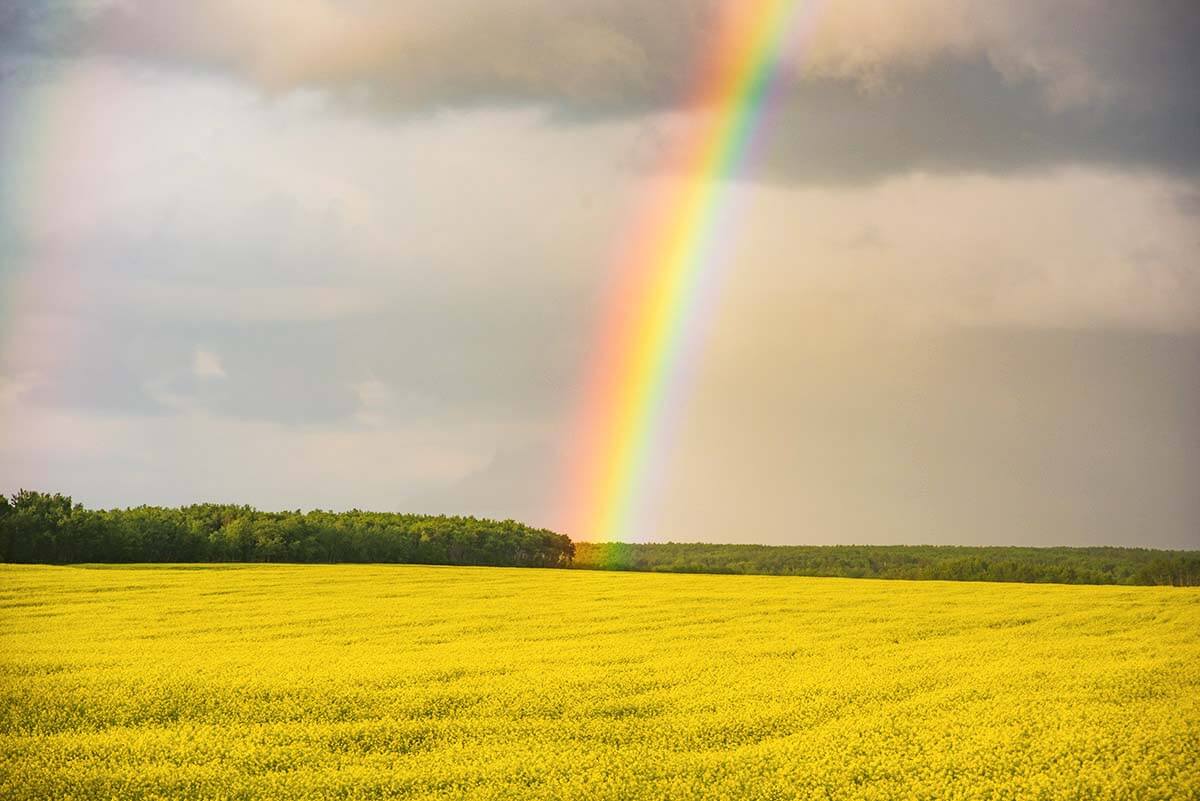
Canola and Flax make a Great Combination
Our personal favourite is to try to find canola next to a flax crop in bloom. The blue from the flax next to yellow canola makes for an interesting melding of primary colours. However, this combination is not very common and it’s usually a short window to find both crops flowering at exactly the same time. As a general rule, flax tends to bloom a bit later than canola, but this varies considerably. While flax is grown in many parts of Saskatchewan, our go-to area to try to find flax and canola together is usually around Redberry Lake or northeast of Saskatoon.
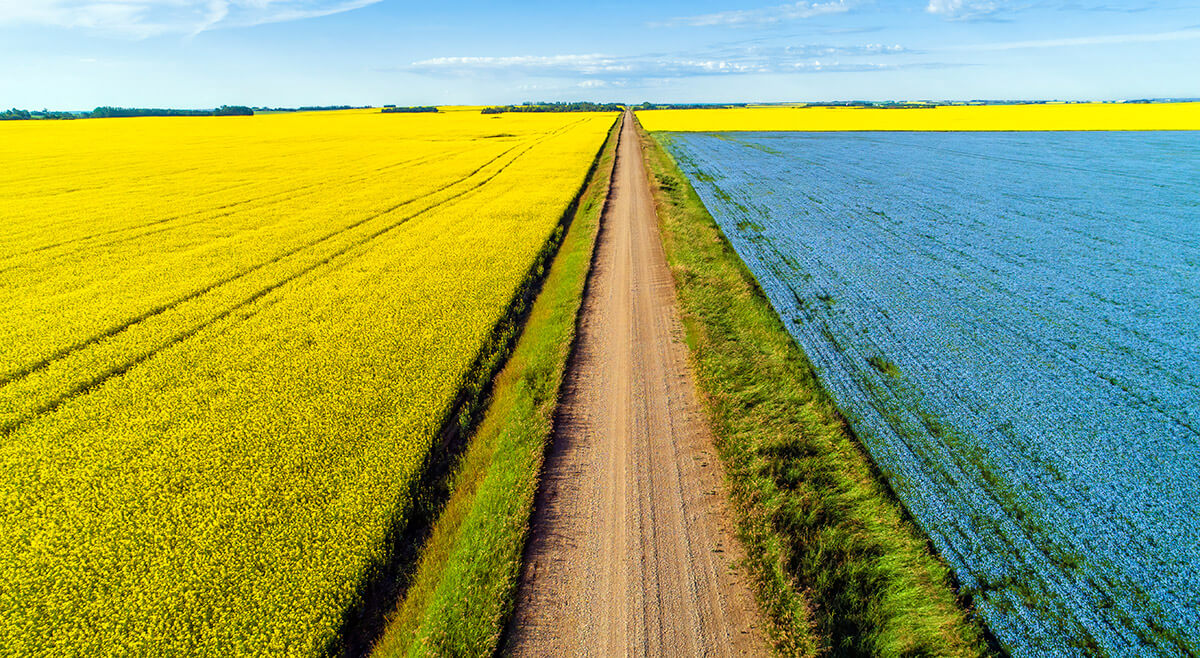
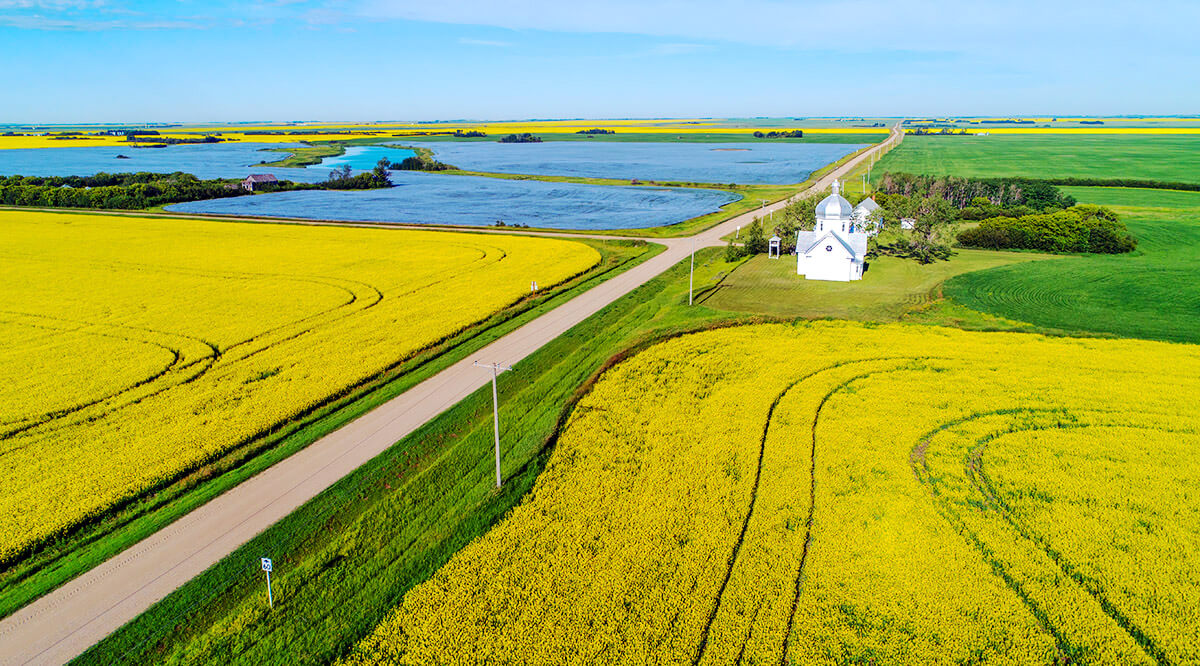
Because of crop rotations, if you see canola or flax planted in a particular spot this year, the same crops almost certainly won’t be in the same fields next year. So it’s difficult to plan your photography ahead of time, other than scouting out locations earlier in the season to see what is planted where. Generally we find it easier to simply go exploring and see what we can find.
SUBSCRIBE to Photojourneys below
Feel free to PIN this story on Saskatchewan’s Canola Bloom
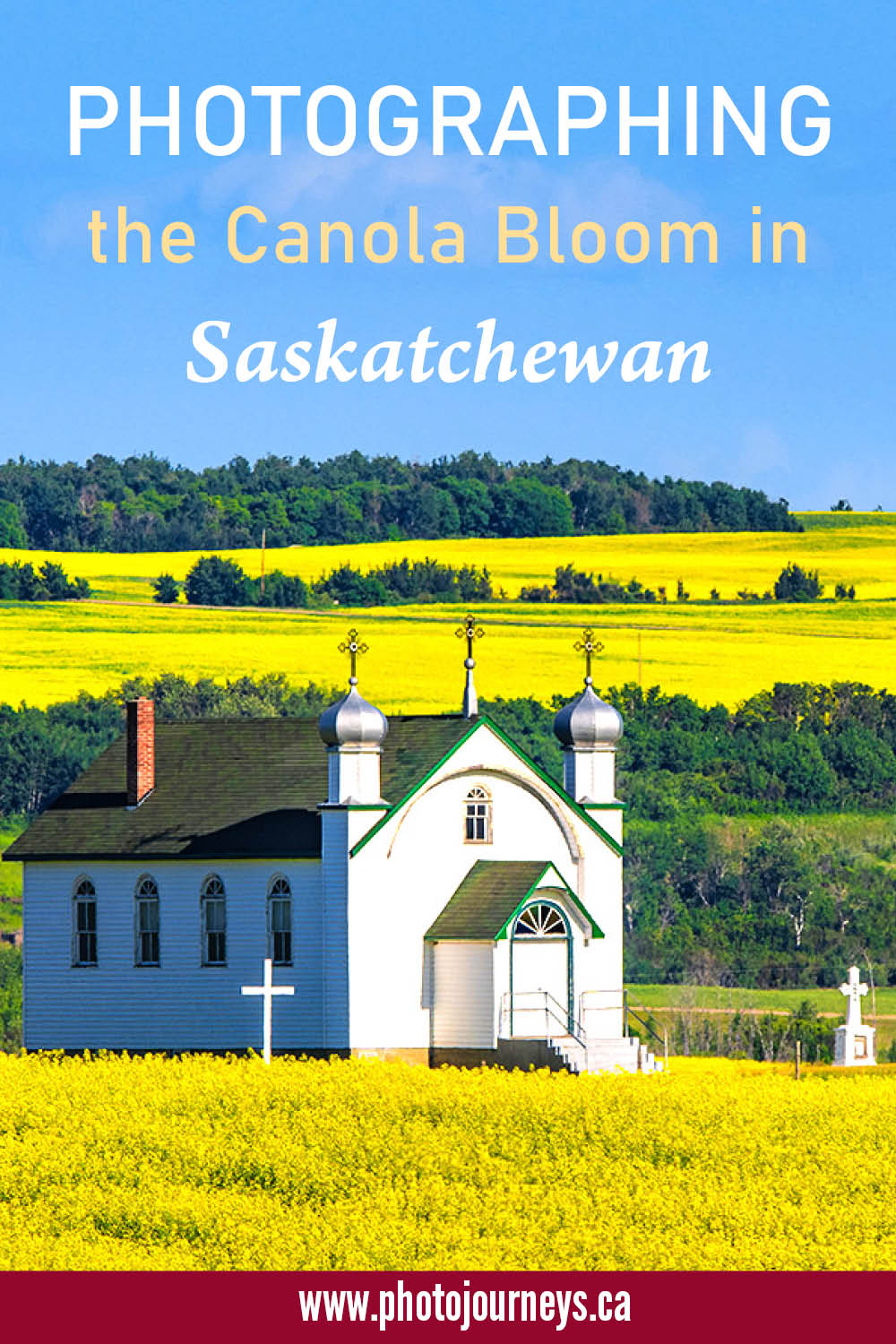


Absolutely stunning photography love the contrast with buildings etc and the flax field !
Thank you for sharing the wonderful scenery of Saskatchewan
Helene – Thanks for your comments Helene. We’re pleased that you enjoyed the article.
Hi Robin and Arlene, Thanks for sharing the beautiful Canola images. I am interested to have a view of the beautiful scenery, just wonder if it would still good before Mid August. thx !
Cheers, Norm
Thanks for your comments Norm. By mid-August almost all of the canola will be done flowering. In fact, a lot of it has changed just over the last week. In a “normal” year the height of the bloom is usually around mid to the third week of July, although it can vary from place to place. It seems that this summer everything is happening earlier.
Hi Robin and Arlene, Just wonder if I arrived on the 3rd of August. Do I still have s chance ?
Thx !
There may be some canola still in bloom, but I wouldn’t expect very much.
Thx !